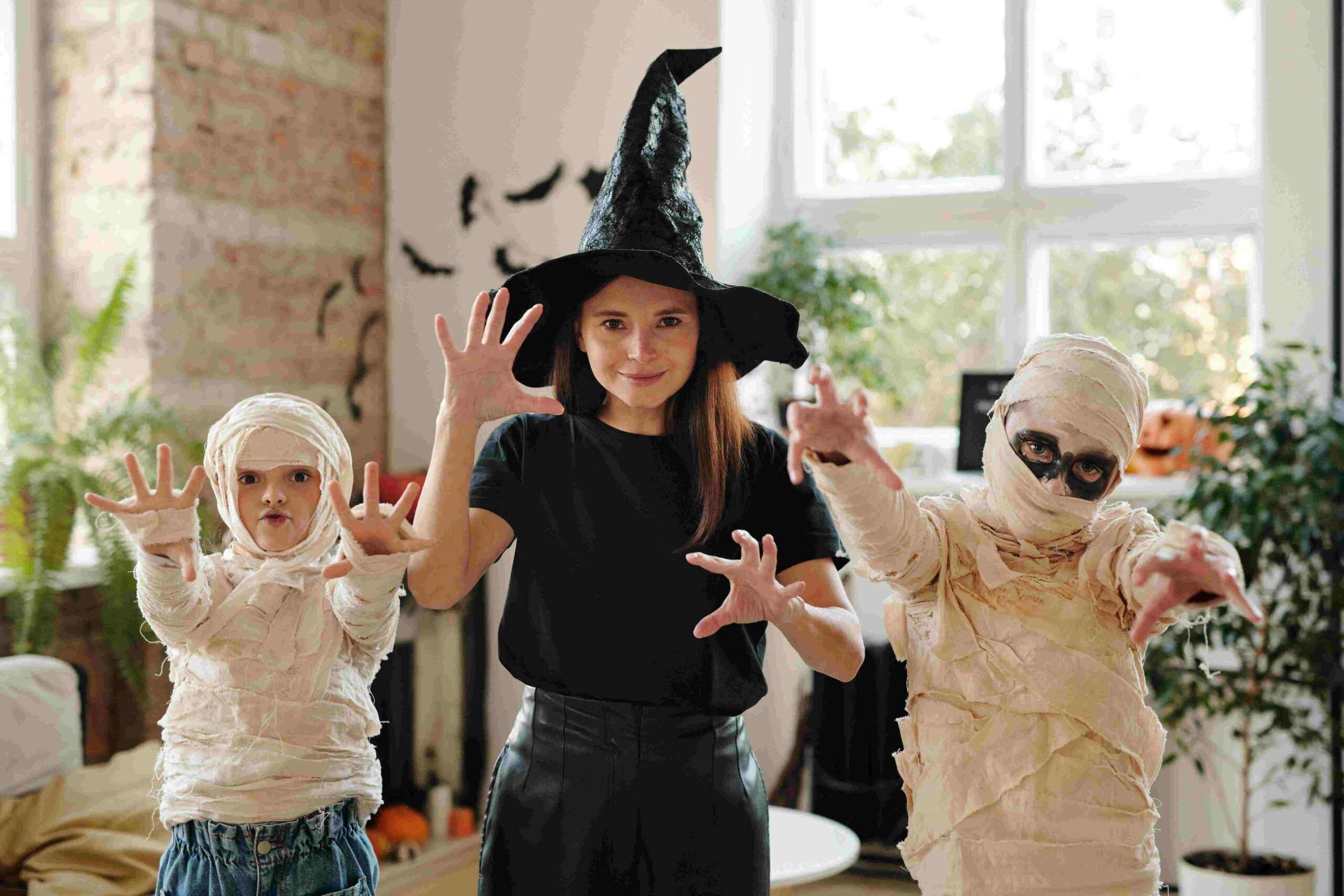
Celebrating Halloween: Costumes and Treats
Article Level: C2
Explanation: This article explores the vibrant traditions of Halloween, from creative costumes to delicious treats, highlighting its historical roots in Samhain. It celebrates the holiday’s essence of imagination, community, and fun, showcasing why Halloween remains a cherished global festival.
Read more: Celebrating Halloween: Costumes and Treats
Commonly Used Words from the Article
-
Vibrant /ˈvaɪ.brənt/ (adjective): Full of energy and life.
The vibrant costumes brought the party to life. -
Delectable /dɪˈlek.tə.bəl/ (adjective): Delicious.
Guests enjoyed the delectable pumpkin-shaped cookies. -
Cherished /ˈtʃerɪʃt/ (adjective): Held dear or valued.
Halloween is a cherished holiday for many. -
Embrace /ɪmˈbreɪs/ (verb): Accept or support willingly.
Communities embrace the festive spirit with enthusiasm. -
Festivities /fɛˈstɪvɪtiz/ (noun): Celebrations or joyful activities.
The festivities included a parade and a haunted house.
Audio File of the Article

Celebrating Halloween: Costumes and Treats
Halloween, celebrated on 31st October, is a vibrant festival brimming with creativity and indulgence. Originating from the ancient Celtic festival of Samhain, it has evolved into a global occasion marked by imaginative costumes, delectable treats, and a touch of spooky fun. This article explores the essence of Halloween through its celebrated customs and highlights its enduring appeal.
The Art of Dressing Up
One of Halloween’s most captivating traditions is dressing up in costumes. Whether inspired by fictional characters, historical figures, or personal creativity, the possibilities are endless. Costume parties often set the stage for showcasing these creations, with participants vying for the most inventive or humorous attire.
For many, the process of selecting or designing a costume is as thrilling as wearing it. Popular choices include classic figures like witches, vampires, and ghosts, while others opt for contemporary icons or clever mash-ups. Costumes not only allow for personal expression but also foster a sense of community as people come together to celebrate.
Treats That Delight
No Halloween celebration is complete without an array of sweets and snacks. The tradition of “trick-or-treating” sees children, often accompanied by adults, visiting neighbourhoods in search of candy. Dressed in their finest costumes, they knock on doors and recite the familiar phrase, “Trick or treat!” in exchange for sugary delights.
Beyond trick-or-treating, Halloween-themed foods add to the festive spirit. From pumpkin-shaped cookies to candy apples and spiced cakes, the culinary creativity knows no bounds. These treats, often adorned with eerie designs, bring a playful yet delicious touch to celebrations.
Embracing the Spirit of Halloween
While costumes and treats take centre stage, Halloween’s charm lies in its ability to bring people together. Communities organise events such as haunted houses, parades, and storytelling sessions, ensuring there is something for everyone. The emphasis on imagination and togetherness makes it a holiday cherished by people of all ages.
Additionally, Halloween provides an opportunity to reflect on its historical roots. The ancient Celts believed that Samhain marked the boundary between the living and the dead, a time to honour ancestors and embrace the cycle of life and death. This rich history adds depth to the modern festivities, reminding participants of the cultural significance behind the fun.
Conclusion
Halloween’s enduring appeal lies in its perfect blend of creativity, community, and history. Whether you’re crafting the perfect costume, indulging in sweet treats, or simply revelling in the festive atmosphere, there’s no denying the magic of 31st October. So, don your favourite costume, share a spooky story, and enjoy the delightful treats that make Halloween a celebration like no other.

Grammar Notes
-
Complex Sentences: Used to convey detailed ideas and relationships. Example: “The ancient Celts believed that Samhain marked the boundary between the living and the dead, a time to honour ancestors and embrace the cycle of life and death.”
-
Present Perfect Tense: Highlights events relevant to the present. Example: “Halloween has evolved into a global occasion.”
-
Passive Voice: Adds formality and objectivity. Example: “Costume parties often set the stage for showcasing these creations.”
Grammar Lesson: The Present Perfect Tense is used to describe actions that started in the past and continue to the present or have present relevance. Formed using has/have + past participle, it is commonly employed to discuss historical developments or ongoing traditions.
Example:
- Form: “Halloween has brought communities together for centuries.”
- Use: Indicates continuity or relevance.

Five Questions Based on the Article
-
-
What is the historical origin of Halloween?
-
How do costumes contribute to Halloween celebrations?
-
What is the significance of trick-or-treating?
-
Name three popular Halloween-themed foods mentioned in the article.
-
How does Halloween reflect its historical roots today?
-

We’d love to hear your thoughts! Join the conversation by leaving a comment below. Sharing your insights, questions, or experiences can help you connect with others in our English learning community. It’s a great way to practice your English skills, engage with like-minded individuals, and improve together. Don’t be shy—jump in and let’s keep the discussion going!

 EnglishMasteryHub
EnglishMasteryHub